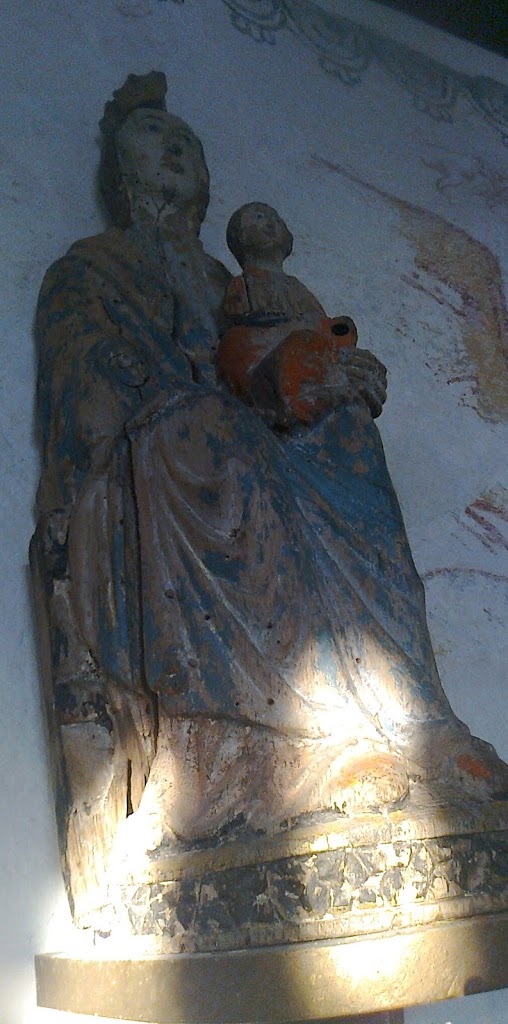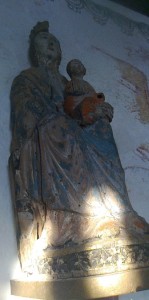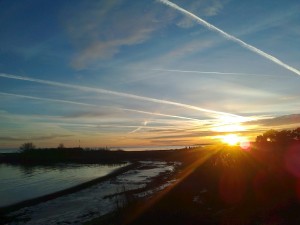
Bride binn nam bas ban.
A Bhride chaoin cheanail,
Is caoimh liom anail do bheoil,
D uair reidhinn air m’ aineol
Bu to fein ceann eisdeachd mo sgeoil
Feast of the Bride, feast of the maiden.
Melodious Bride of the fair palms.
Thou Bride fair charming,
Pleasant to me the breath of thy mouth,
When I would go among strangers
Thou thyself wert the hearer of my tale.
From “Prayers to Brighid”
in the Carmina Gadelica
by Alexander Carmichael
The Carmina Gadelica is a nineteenth-century collection of prayers, hymns, charms, incantations, blessings, runes, and other literary-folkloric poems and songs collected and translated by amateur folklorist Alexander Carmichael (1832–1912) during his visits to the Highlands of Scotland. A large portion of the collection is devoted to the customs associated with Bride, as she was known in the Highlands, and her feast-day.
Imbolc, also known as Candlemas and Groundhog’s Day, occurs at the beginning of February. It marks the middle of Winter and holds the promise of Spring. The Goddess manifests as the Maiden and Brigid. The Groundhog is a manifestation of the God. Colors are White, and sometimes Red. It is a festival of spiritual purification and dedication.
In Celtic religion and Irish mythology, Brigit or Brighid (exalted one) is the daughter of the Dagda and one of the Tuatha Dé Danann. She was the wife of Bres of the Fomorians, with whom she had a son, Ruadán. She had two sisters, also named Brighid, and is considered a classic Celtic Triple Goddess.
Goddess Brigit is a beloved Goddess associated with Healing Waters, Wells and Springs. She is the Lady of the Sacred Flame, the Flame of Inspiration, the Flame of Creative Consciousness. Brigit is the “Bringer of Prosperity,” Goddess of Fertility, New Growth and Birth. She is the Patroness of Poetry, Healing, Smithcraft, Midwifery and Animal Care & Breeding. Brigit is Warrior and Healer, Protectress and Goddess of Healing Grace.
Brigit is said to have been born at the exact moment of day break, she rose with the sun, her head radiant with rays of luminous light, associating her with ascended awareness, enlightenment, new beginnings, sun beams and warmth. She is celebrated on Imbolc, falling on February 1 or 2, celebrating the return of the light and the coming of the spring. Thus her solar aspects may also represent Brigit as the Promise of Spring, the Bringer of Light after the dark months of winter. This energy brings with it HOPE, renewed enthusiasm, renewal, and new beginnings.
Brigit is considered a Triple Goddess, yet many references distinguish Brigit differently than the traditional Triple Goddess aspects of Maiden, Mother and Crone. Rather Brigit is frequently referenced having three sister selves with three distinct roles, Lady of Healing Waters, Goddess of the Sacred Flame and Goddess of the Fertile Earth. These roles are then multiplied through Brigit’s vast and varied responsibilities.
Imbolc or Imbolg, also called (Saint) Brighid’s Day (Irish: Lá Fhéile Bríde, Scottish Gaelic: Là Fhèill Brìghde), is a Gaelic festival marking the beginning of spring. Most commonly it is held on 31 January – 1 February, or halfway between the winter solstice and the Spring equinox. Imbolc is mentioned in some of the earliest Irish literature and it is associated with important events in Irish mythology. It has been suggested that it was originally a pagan festival associated with the goddess Brighid and that it was Christianized as a festival of Saint Brighid, who herself is thought to be a Christianization of the goddess. At Imbolc, Brighid’s crosses were made and a doll-like figure of Brighid, called a Brídeóg, would be carried from house-to-house. Brighid was said to visit one’s home at Imbolc. To receive her blessings, people would make a bed for Brighid and leave her food and drink, while items of clothing would be left outside for her to bless. Brighid was also invoked to protect livestock. Holy wells were visited and it was also a time for divination.
One of the most popular tales of the goddess Brigid involved two lepers who appeared at her sacred well at Kildare and asked to be healed. She told them that they were to bathe each other until the skin healed. After the first one was healed, he felt only revulsion for the other and would not touch him to bathe him. Angered, Brigid caused his leprosy to return. Then she gently placed her mantle (cloak) around the other leper who was immediately healed. Ireland is full of springs and wells named after the goddess Brigid. Symbolically, water is seen as a portal to the Otherworld and as a source of wisdom and healing. There is a saying that Brigid rewards any offering to her, so offerings of coins were often tossed into her wells…the forerunner of the modern custom of throwing a penny into a fountain while you make a wish.





